Gudi Padwa
Gudi Padwa
Gudi Padwa is a major festival celebrated in Maharashtra and some other parts of India to mark the beginning of the Hindu New Year according to the lunisolar calendar. It usually falls in March or April and symbolizes the arrival of spring and harvest. On this day, people raise a “Gudi,” a decorated bamboo stick with a bright cloth, neem leaves, mango leaves, a garland of flowers, and a pot (kalash) on top, which is hoisted outside homes as a sign of victory, prosperity, and good fortune. Families clean and decorate their homes, prepare special dishes like puran poli and shrikhand, and pray for health, happiness, and success.
Gudi Padwa marks the Hindu New Year and symbolizes prosperity, happiness, and new beginnings
Gudi Padwa
Gudi Padwa is a traditional festival celebrated mainly in Maharashtra, marking the Hindu New Year with joy, prosperity, and new beginnings. On this day, people hoist a beautifully decorated Gudi outside their homes, symbolizing victory and good fortune. Families prepare festive dishes, clean and decorate their homes, and pray for happiness and success.
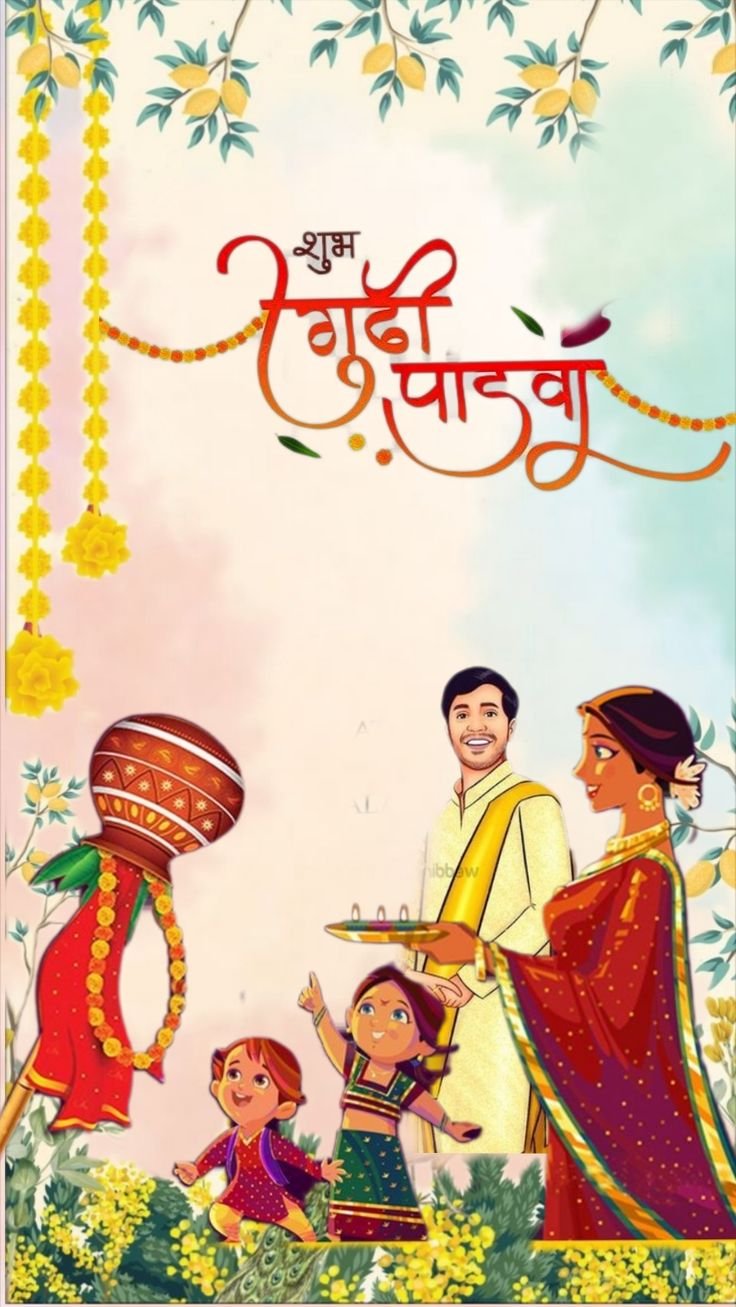
Mythological Significance & History
Gudi Padwa is one of the most important festivals celebrated in Maharashtra, which marks the beginning of the Hindu New Year as per the lunisolar calendar. It generally falls in March or April and is also celebrated in other regions of India under different names, such as Ugadi in Andhra Pradesh and Karnataka, and Cheti Chand by Sindhi communities. The highlight of the festival is the hoisting of a beautifully decorated “Gudi” outside homes. A bamboo stick is adorned with a bright silk cloth, neem leaves, mango leaves, a garland of flowers, and topped with a silver or copper kalash. This Gudi is considered a symbol of prosperity, victory, and good fortune. People believe it wards off evil and brings positive energy into the household. On this day, homes are thoroughly cleaned and decorated with rangoli, and families prepare traditional dishes like puran poli, shrikhand, and neem-jaggery mixture which signifies the blend of life’s sweet and bitter experiences. The festival not only celebrates the arrival of spring and harvest but also inspires people to start the year with hope, joy, and enthusiasm. It is a time for togetherness, cultural pride, and devotion.

Significance of this Gudi Padwa
Gudi Padwa is a prominent festival celebrated in Maharashtra and several parts of India, marking the beginning of the Hindu New Year as per the lunisolar calendar. It usually falls in March or April and coincides with the onset of spring and the harvest season. The festival holds deep cultural and spiritual importance, as it symbolizes new beginnings, prosperity, and victory. The most distinctive feature of Gudi Padwa is the hoisting of the “Gudi” outside homes. The Gudi is made using a bamboo stick adorned with a bright silk cloth, neem leaves, mango leaves, a garland of flowers, and a silver or copper kalash placed on top. This arrangement is considered a sign of success, joy, and good fortune. It is also believed to ward off evil and attract prosperity into the household.
On this auspicious day, people clean their homes, decorate entrances with colorful rangoli, and wear new clothes. Special dishes such as puran poli, shrikhand, and the traditional neem-jaggery mixture are prepared, representing the blend of life’s sweet and bitter experiences. Gudi Padwa is not only celebrated in Maharashtra but also observed in different forms across India—Ugadi in Karnataka and Andhra Pradesh, Cheti Chand among Sindhis, and Navreh in Kashmir. This festival highlights unity in diversity, as people from different regions celebrate the same spirit of renewal and hope.
Beyond rituals, Gudi Padwa encourages people to embrace positivity, leave behind negativity, and welcome the new year with energy and enthusiasm. It is a festival of joy, cultural pride, and devotion, reminding everyone of the cycle of life, the blessings of harvest, and the importance of starting afresh.
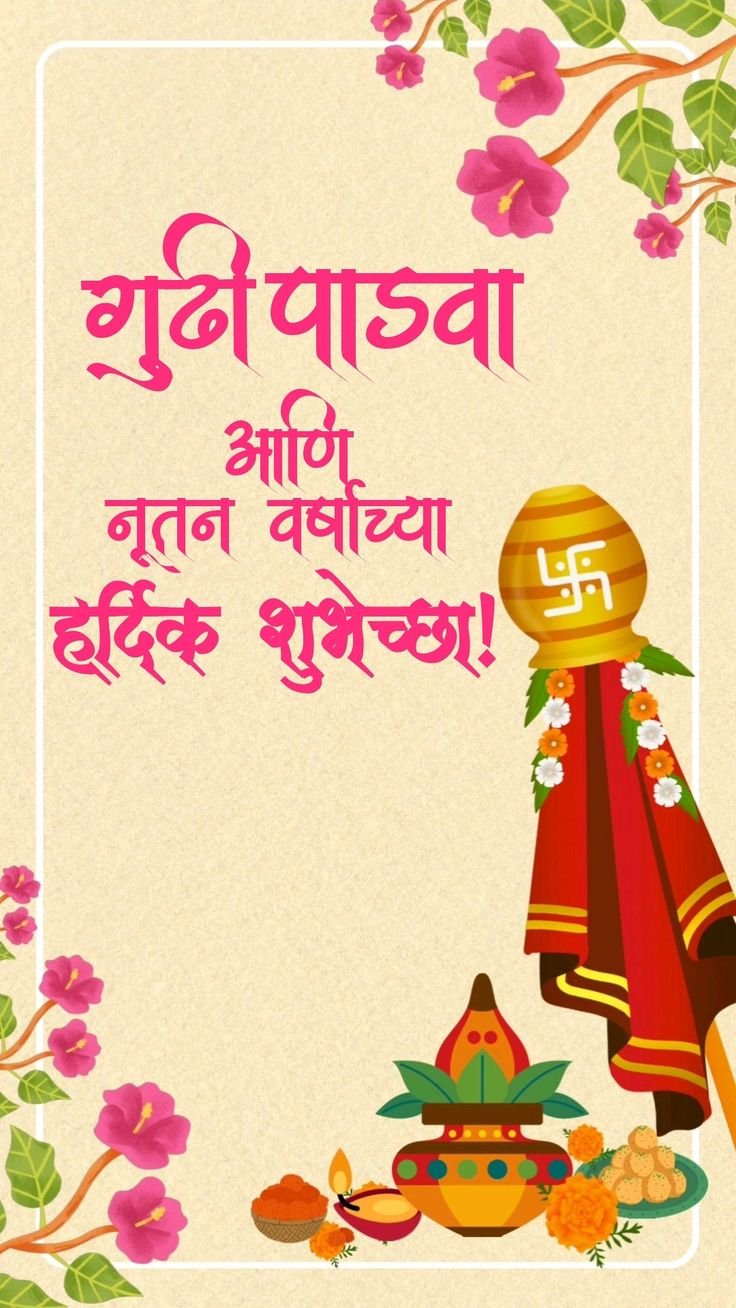
Rituals & Traditions of Gudi Padwa
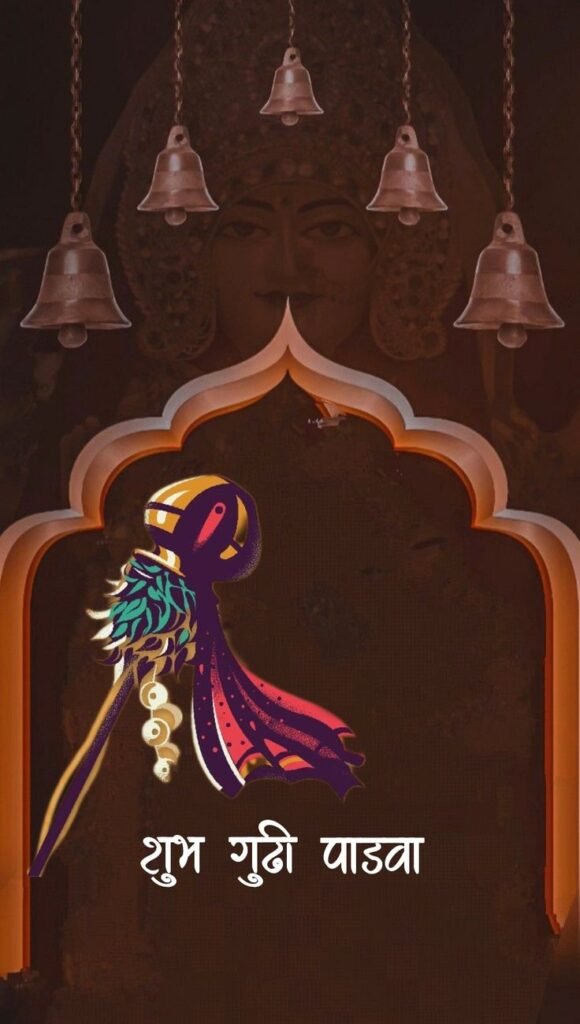
Gudi Padwa is a highly significant festival celebrated in Maharashtra and some other parts of India, marking the beginning of the Hindu New Year according to the lunisolar calendar. It usually falls in March or April, symbolizing the onset of spring, the harvest season, and new beginnings. The festival is deeply rooted in mythology and tradition. It is believed that on this day, Lord Brahma created the universe and also that King Shalivahana achieved a great victory, making the Gudi a symbol of triumph, prosperity, and joy. The highlight of the celebration is the hoisting of the “Gudi” outside homes. This Gudi is made using a bamboo stick, draped with a bright silk cloth, decorated with neem leaves, mango leaves, garlands of flowers, and topped with a silver or copper kalash. It is considered auspicious as it is believed to ward off evil, attract prosperity, and bring blessings into the household.
The day begins with ritualistic oil baths, cleaning and decorating homes, and creating colorful rangoli designs at the entrance. Families wear new clothes and come together to celebrate the festival with joy. A special feature of Gudi Padwa is the preparation of festive delicacies such as puran poli, shrikhand, and the unique neem-jaggery mixture, which symbolizes life’s dual nature of sweet and bitter experiences. Beyond Maharashtra, the festival is celebrated under different names across India—Ugadi in Karnataka and Andhra Pradesh, Navreh in Kashmir, Cheti Chand among Sindhi communities, and Samvatsar Padvo in Goa. Each region has its own traditions, but the essence remains the same: to welcome the new year with hope, positivity, and devotion.
Gudi Padwa is not merely a harvest festival; it is also a cultural and spiritual occasion that inspires people to embrace fresh beginnings. It emphasizes unity, family bonding, and gratitude for nature’s blessings. The festival teaches us to overcome difficulties, celebrate victories, and move forward with courage. With its vibrant rituals, delicious food, and joyous atmosphere, Gudi Padwa is truly a festival of prosperity, renewal, and happiness.
Spiritual Importance & Cultural Significance
Gudi Padwa is one of the most important and joyful festivals of Maharashtra, celebrated as the beginning of the Hindu New Year according to the lunisolar calendar. It usually falls in March or April and signifies the arrival of spring, the harvest season, and new opportunities. The festival has both mythological and cultural importance. It is believed that Lord Brahma created the universe on this day, and many also associate it with the great victory of King Shalivahana, making the Gudi a symbol of triumph, positivity, and prosperity. The unique feature of this festival is the hoisting of the “Gudi” outside homes. This Gudi consists of a tall bamboo stick, adorned with a bright silk cloth, decorated with neem leaves, mango leaves, a garland of flowers, and topped with an inverted copper or silver kalash. The Gudi is considered highly auspicious as it represents victory over evil and brings fortune and blessings to the family.
The celebrations begin with people taking a ritual bath, cleaning their homes, and drawing beautiful rangolis at the entrance. Families wear new traditional clothes and gather for prayers and rituals. A variety of festive dishes are prepared, including puran poli, shrikhand, and a special mixture of neem and jaggery, symbolizing the balance of life’s bitter and sweet experiences. Apart from Maharashtra, this festival is celebrated with different names in other parts of India, such as Ugadi in Andhra Pradesh and Karnataka, Navreh in Kashmir, Cheti Chand among Sindhis, and Samvatsar Padvo in Goa. Despite regional variations, the essence of the celebration remains the same: welcoming the new year with joy, hope, and devotion.
Gudi Padwa is not only a harvest festival but also a cultural occasion that strengthens family bonds and community unity. It encourages people to begin afresh, leaving behind the difficulties of the past year and embracing the future with enthusiasm. With its colorful traditions, spiritual significance, and festive spirit, Gudi Padwa truly represents prosperity, renewal, and happiness in the lives of people.
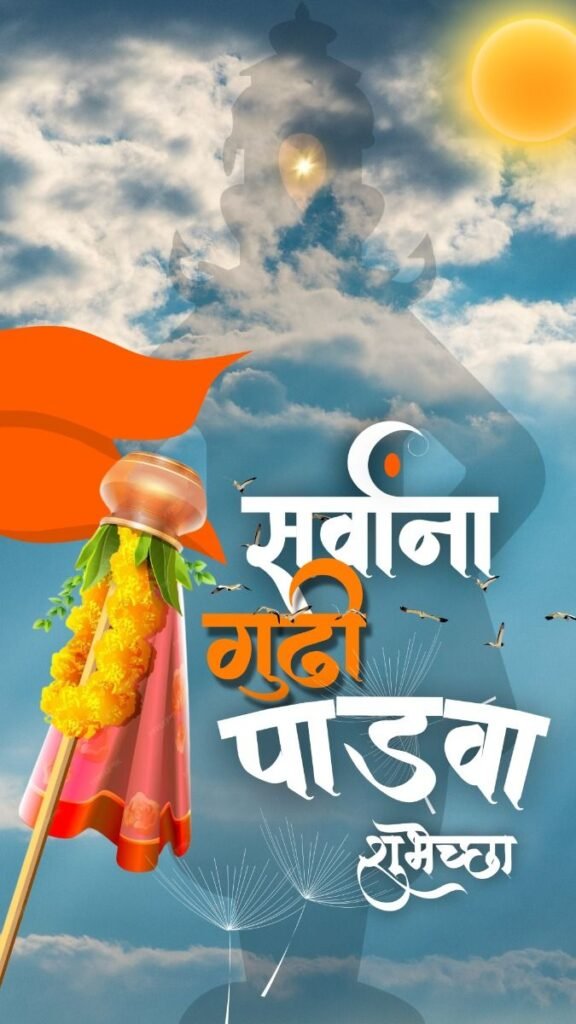
Food & Sweets & Modern Celebrations
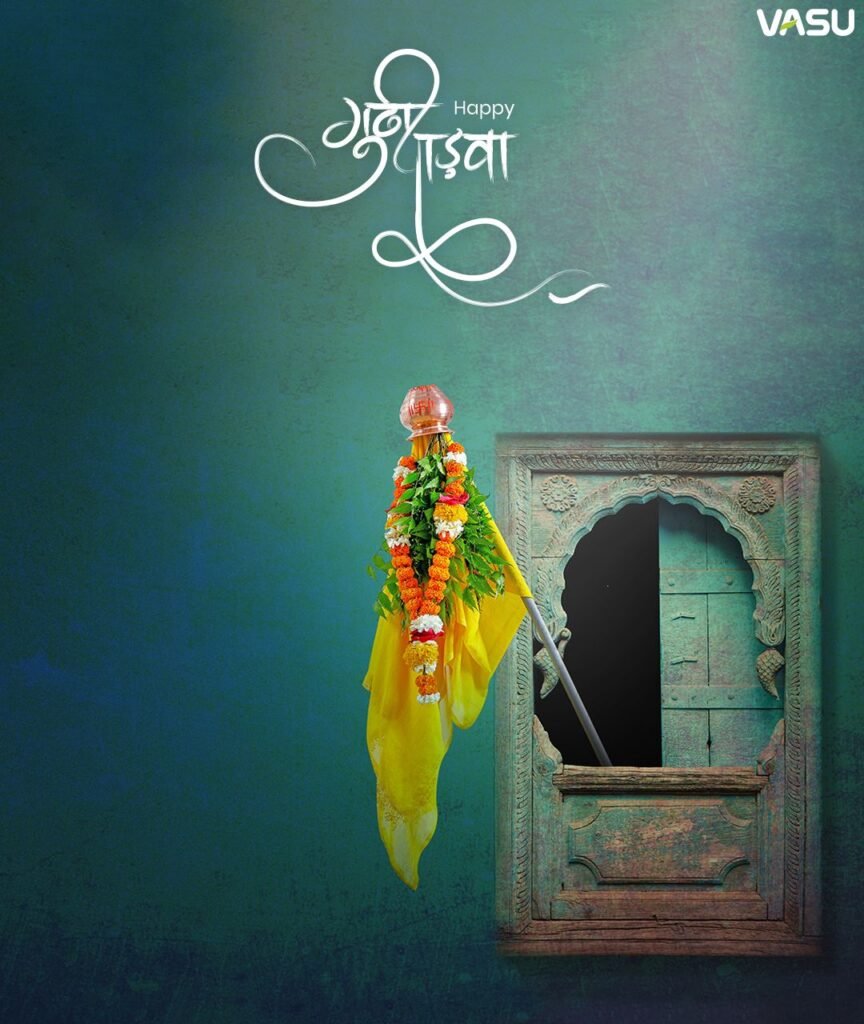
Gudi Padwa is a major festival celebrated in Maharashtra, marking the beginning of the Hindu New Year according to the lunisolar calendar. It usually falls in March or April and coincides with the arrival of spring and the harvest season. The festival has deep cultural and spiritual significance, symbolizing prosperity, new beginnings, and victory. The most unique feature of Gudi Padwa is the hoisting of the “Gudi” outside homes. The Gudi is made using a bamboo stick draped with a bright silk cloth, decorated with neem leaves, mango leaves, flowers, and topped with an inverted copper or silver kalash. It is considered a symbol of good fortune and is believed to protect the household from evil while inviting happiness and prosperity.
On this day, people clean and decorate their homes with colorful rangolis, wear new clothes, and prepare festive dishes such as puran poli, shrikhand, and a special mixture of neem and jaggery that represents the balance of life’s sweet and bitter experiences. Families gather for prayers and celebrations, strengthening bonds and spreading joy. While it is most popular in Maharashtra, the festival is celebrated in various forms across India—Ugadi in Andhra Pradesh and Karnataka, Navreh in Kashmir, Cheti Chand among Sindhis, and Samvatsar Padvo in Goa.
Gudi Padwa not only celebrates harvest and prosperity but also inspires people to embrace positivity and start the year with enthusiasm. It is a festival of cultural pride, unity, and devotion, reminding everyone to welcome new opportunities with hope and gratitude. energy, making Ashadi Ekadashi one of the most vibrant and spiritually uplifting occasions in the Hindu calendar.




















































